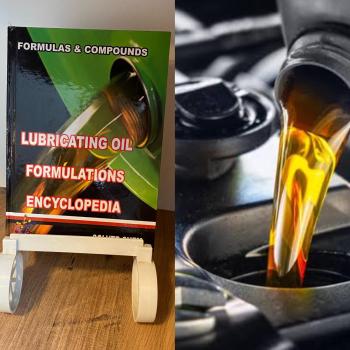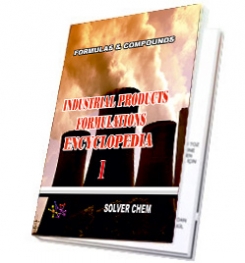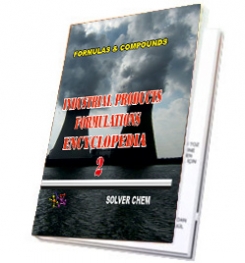
More serious is the hardened byproduct of oil drainage that builds inside the cavities of operating bearings and gears over time. Often this takes years to develop, while in other cases the condition can reach catastrophic levels in just a few weeks. The failure can be self-propagating. As grease becomes dry, frictional forces escalate, causing concentrated heat within the bearing. The elevated heat continues to force more rapid and complete drying of the grease. In time, the grease can reach a state of consistency ranging from hard putty to sandstone, depending on the thickener type and degradation conditions.
Frequently the most serious offending conditions leading to grease dry-out are aided by other causes working in concert. Let’s begin by reviewing the primary causes of grease dry-out. Once the causes are determined, we have the information necessary to prescribe steps to correct or mitigate the problem.
Causes of Grease Dry-out
Contamination. Gross contamination by dust, dirt, fly ash and similar dry-power contaminants can thicken the grease just like the introduction of a gelling agent.
Incompatible Grease. Accidental mixing of grease can lead to accelerated de-gelling and oil separation. There are many classical examples of this, including the clashing of organic clay grease with soap-thickened grease.
High-temperature Volatility. Grease made from low-viscosity base oils is at the highest risk of volatilization. At sufficiently high temperatures, oil can boil out of the thickener matrix, causing hardening of the grease over time (lower oil-to-thickener ratio and higher base-oil viscosity).
Thermal Run-away. Too much grease in a bearing, mechanical conditions (misalignment, excess preload, etc.), and starvation can lead to high running temperatures. This is most commonly associated with over-greasing, causing high heat from churning. In such cases, the dropping point is reached, the bearing begins to bleed, the grease runs dry and eventually failure occurs. Figure 2 shows an example of such a bearing.
Mechanical Wring-out. Some types of rolling-element bearings are more prone to oil separation. Spherical roller bearings would be such an example. When grease is over-rolled by the bearing or gears, the oil can be rapidly separated from the thickener. This is referred to as mechanical wring-out. The oil is squeezed like a wet sponge. Some thickeners have good reversibility, while others do not. A grease is reversible when oil will quickly reabsorb into the thickener after the load is relaxed. Aluminum complex is a soap-based grease with good reversibility.
Hydrostatic Extrusion. Grease under constant pressure can separate by hydrostatic forces. It’s like water flowing through a sand filter. The sand stays put, but the water flows freely under pressure through the grains of sand (sieving). Some grease products are formulated specifically to resist extrusion by using special thickeners, polar base oils, VI improvers, tackifiers and higher thickener concentrations. Some single-point auto-lubers (spring type) expose grease to constant pressure, which causes bleed and separation from the thickener. The oil is literally being squeezed out of the thickener.
Vibration and Centrifugal Forces. Grease exposed to prolonged vibration and/or centrifugal forces is also known to separate prematurely. High-speed mechanical couplings can spin some grease products dry in a short period of time if the wrong grease is used. Among other things, significant differences in the specific gravity between the base oil and thickener can sharply increase centrifugal separation.
Cake-lock Failures
A cake-lock failure is like a microscopic logjam. As the thickener dries out, it becomes immobile and jams the flow path and even mechanical motion. Oil may flow through the thickener (hydrostatic extrusion), but the thickener goes nowhere. As more grease enters and oil exits, the more the logjam builds. Eventually, a rigid binding condition develops from the stiff high-density cake.
The cake-lock condition leads to the previously mentioned thermal excursion and bearing failure. Bearings lubricated with centralized or single-point auto-lubers are perhaps most at risk for cake-lock. When soft grease is being fed into the bearing but only oil emerges from the exhaust port, there is a cake-lock failure in progress. The thickener is being logjammed in the bearing cavity. In centralized lube systems, cake blockage can occur in the lines between the pump and the dosage injectors as well.
To prevent cake-lock, select a suitable low-risk grease formulation and ensure the grease flow is sufficiently high to avoid static conditions that give rise to separation and blockage. Some long-fiber grease thickeners (e.g., simple sodium soap) are particularly prone to grease-flow stability problems. Standardized tests for mobility and pumpability are good for screening grease with high cake-lock risks. Frequent movement of grease also can keep the flow path fresh and inhibit blockage. However, there may still be some unavoidable zones of dry grease that build up in adjacent side cavities.
Condition Monitoring is Key to Early Detection
As mentioned earlier, vigilantly monitor the quality of lubricant that emerges from bearings in total-loss applications (once through). Sampling grease from a catch pan for consistency, oil content analysis, oxidation and contamination can be helpful. Use a lab with experience in analyzing used grease samples, as the techniques vary sharply from standard ASTM grease-performance testing methods. Tools are now available to extract grease samples directly from running bearing cavities, too.
Finally, always get feedback from rebuild shops on what they are seeing inside failed bearings. Any appearance of grease that is questionable (hardness, color, contamination, oxidation, etc.) should be sampled for analysis. Allow failure to be a teacher for continuous improvement.
TAGS : WHAT TO BE RESULTS OF DRY GREASE,WHAT İS GREASE DRYING,PROBLEMS OF GREASE DRY,WHY TO BE GREASE DRY,TO MAKE GREASE,FORMULAS OF GREASE,PRODUCTION OF LITHIUM GREASE,METHODS OF SODIUM GREASE,COMBINATION OF CALCIUM GREASE FOR FOOD,MAKING FOOD GREASE,FORMULATION OF FOOD GREASE.
SOLVER CHEM

|
|

|
|

|
|

